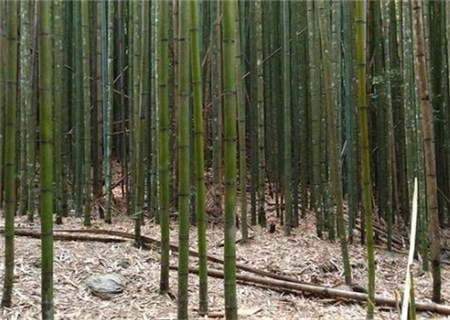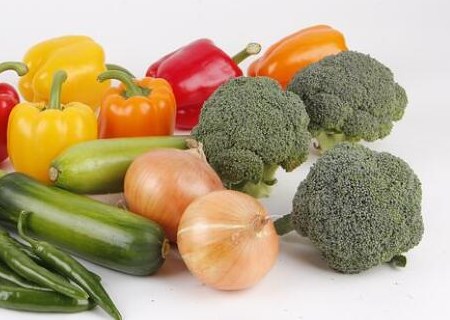The breeding methods and matters needing attention of sunflower echinacea? How do you breed? What's the use?
Echinacea is one of the indispensable flower varieties for courtyard, park, street green space and street greening and beautification, festival flower arrangement, so the breeding methods and matters needing attention of echinacea? How do you breed? What's the use? According to the data, echinacea is a long-day plant, which needs to keep 14 mi 16 hours of light every day in the flowering stage, and it also needs to maintain 7 mi 8 weeks of high intensity light. The northern region generally blossoms in late May, and the flowering period can last until September.

I. Culture methods and matters needing attention of echinacea
Light
Echinacea is a long-day plant, in the flowering stage of the plant to ensure 16 hours of light a day, but also need to maintain 8 weeks of high-intensity light, the northern region generally blossoms in late May, the flowering period can last until September.
Temperature
During the growing period, the temperature of echinacea should be kept at 16 ℃-24 ℃ in daytime and 10 ℃-16 ℃ at night.
Fertilizer application
The nitrogen concentration of water-soluble fertilizer was 50-75rrg/kg from radicle appearance to cotyledon expansion, 100-150mg/kg when cotyledon unfolded to 4 true leaves, and 250mg/kg after planting.
Moisture content
Echinacea is strong and resistant to drought, so watering should follow the principle of "dry and wet". Wait until the basin soil is dry, and then water it thoroughly at one time.
Soil
Echinacea is not strict on soil, but it grows best in deep, fertile and humus-rich soil.
Note:
adequate manuring
Appropriate supplement of 0.05% magnesium sulfate 1Mel 2 times to prevent magnesium deficiency in plants.
Also supplement 1Mel twice chelated iron to prevent iron deficiency.
It is suggested that long-acting slow-release fertilizer should be added to the basin soil when planting.
Pay attention to cold prevention in winter
In November, the temperature in the northern region is relatively low, it is necessary to move the echinacea into the room for maintenance, keep the room temperature above 0 ℃, the echinacea can grow healthily.
Pay attention to ventilation
Put echinacea in a ventilated and breathable place to maintain good ventilation.
Second, how to reproduce?
1. Sowing method
Sowing can be carried out in late April in spring or early September in autumn. after leveling the depth of the seedling bed in the open field, pour water thoroughly, and sow seeds evenly until all the water seeps into the ground.
When sowing, it is guaranteed to sow about 1000 seeds per square meter, the temperature is controlled at about 22 ℃, and seedlings can emerge in 13 to 15 days.
When the seedlings grow out of two true leaves, they can be transplanted.
two。 Split-plant method
Echinacea is a perennial herbaceous plant. For perennial mother plants, it can be propagated separately in spring and autumn.
Take out the roots of the mother plant from the ground, be careful not to hurt the new roots, remove part of the soil, remove the old roots and diseased roots.
The mother plant was isolated from the rhizome with a knife and divided into several plants averagely. Each plant was kept with 5 terminal buds of 4Mel, and then planted in a prepared substrate.
3. Cutting method
Cuttage seedlings should prepare large mother plants, move into the greenhouse in winter for maintenance, wait until spring to take strong branches, retain 2 to 4 true leaves, do not retain the growing point.
The length of the branch should be controlled at 5mi 6cm, and the cut should be under the node and cut as you go.
The depth of cutting is 1/3 to 1/2 of the length of the cuttage, the cutting bed should not be too wet, but the air humidity of the surrounding environment should be high, the ambient temperature should be controlled at 22 ℃, and it can take root in 20 to 30 days.
4. Planting method
The seedlings of echinacea have 3 branches and are planted when they are about 10 cm high.
Pot culture with 15 × 13 cm nutrition bowl, 1 plant per pot, pot soil with agricultural fertilizer, garden soil and fine sand 1/3 each, mixed and sifted.
After the seedlings are planted, the potted soil should be compacted, watered enough, put in a cool place, and moved to the sun for 10 days to begin to grow normally.
Third, function
Medicinal use:
Widely used in the United States and Europe, it is generally considered to have immune enhancement, containing a variety of active components, can stimulate the vitality of white blood cells and other immune cells in the human body, and improve the body's self-immunity.
Watch:
It can be used as background planting or flower border, slope material, as well as cut flowers.
Potted echinacea: potted soil needs loose and fertile mixed soil or culture soil. When planting, depending on the size of each basin, you can plant 3-5 seedlings. In the early stage of growth, it is necessary to remove the heart once to promote branching. It is better to renew the cultivated plants once a year.
Watering should not be excessive, and watering should be controlled during the rainy season and when the air humidity is high. During the growth period, diluted liquid fertilizer should be applied to promote growth. Apply fertilizer once a week when the bud is formed, and sprinkle water after each fertilization to prevent fertilizer from sticking to the plant. In order to avoid the rain, the cultivation is generally carried out in the greenhouse and should be placed in a well-ventilated and sunny place. The lowest temperature should not be lower than 10 ℃, and proper shade is needed in hot summer.
Time: 2019-03-17 Click:
- Prev

How can Gramineae bamboo be cultivated more vigorously? What are the planting prospects? What's the symbolism?
Bamboo, a wide variety, perennial Gramineae Bambusoideae, stem is woody, is a branch of Gramineae, many species, some as low as grass, some as tall as trees, growing rapidly. So do you know how to grow bamboo more vigorously? What are the planting prospects? What's the symbolic significance?
- Next

How does broccoli (also known as broccoli) control diseases and insect pests? What are the characteristics? What can't you eat with?
In order to ensure the production of high quality broccoli, the prediction of diseases and insect pests should be strengthened. Based on prevention, do you know how to control diseases and insect pests in the process of planting Chinese and Western orchids? What are the characteristics? What can't you eat with? How to control diseases and insect pests in broccoli, 1. ① symptoms of downy mildew
Related
- Fuxing push coffee new agricultural production and marketing class: lack of small-scale processing plants
- Jujube rice field leisure farm deep ploughing Yilan for five years to create a space for organic food and play
- Nongyu Farm-A trial of organic papaya for brave women with advanced technology
- Four points for attention in the prevention and control of diseases and insect pests of edible fungi
- How to add nutrient solution to Edible Fungi
- Is there any good way to control edible fungus mites?
- Open Inoculation Technology of Edible Fungi
- Is there any clever way to use fertilizer for edible fungus in winter?
- What agents are used to kill the pathogens of edible fungi in the mushroom shed?
- Rapid drying of Edible Fungi

